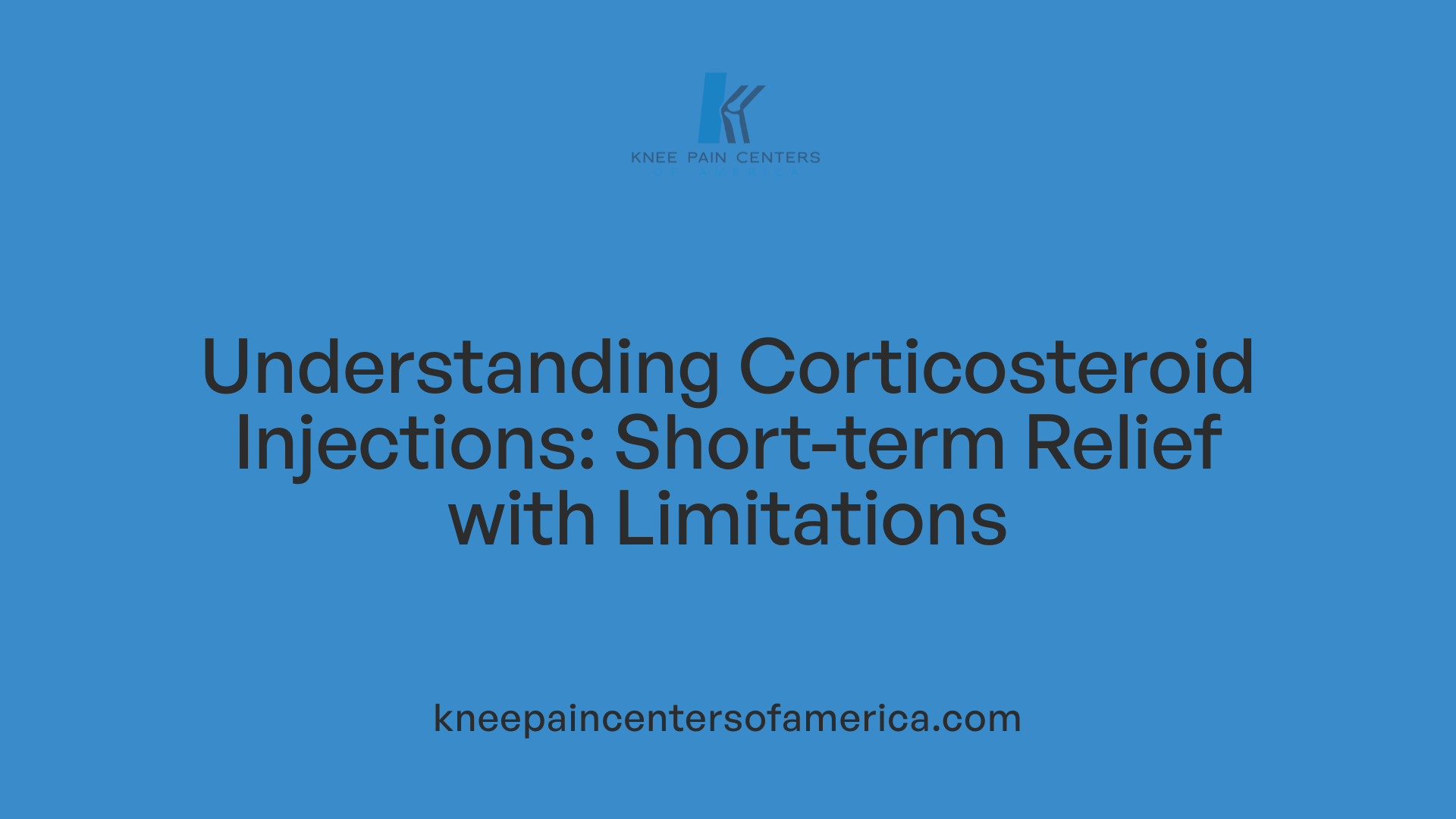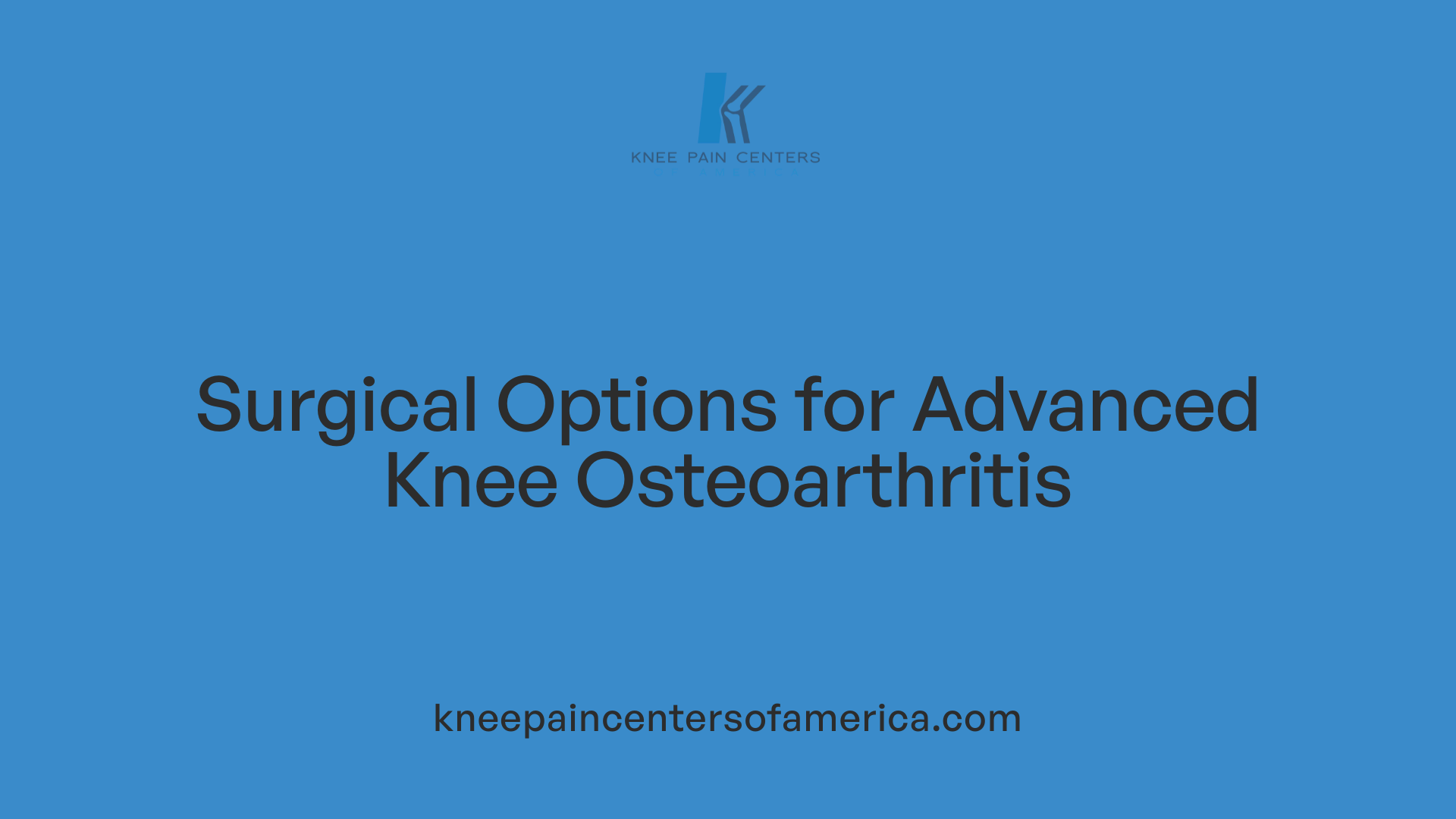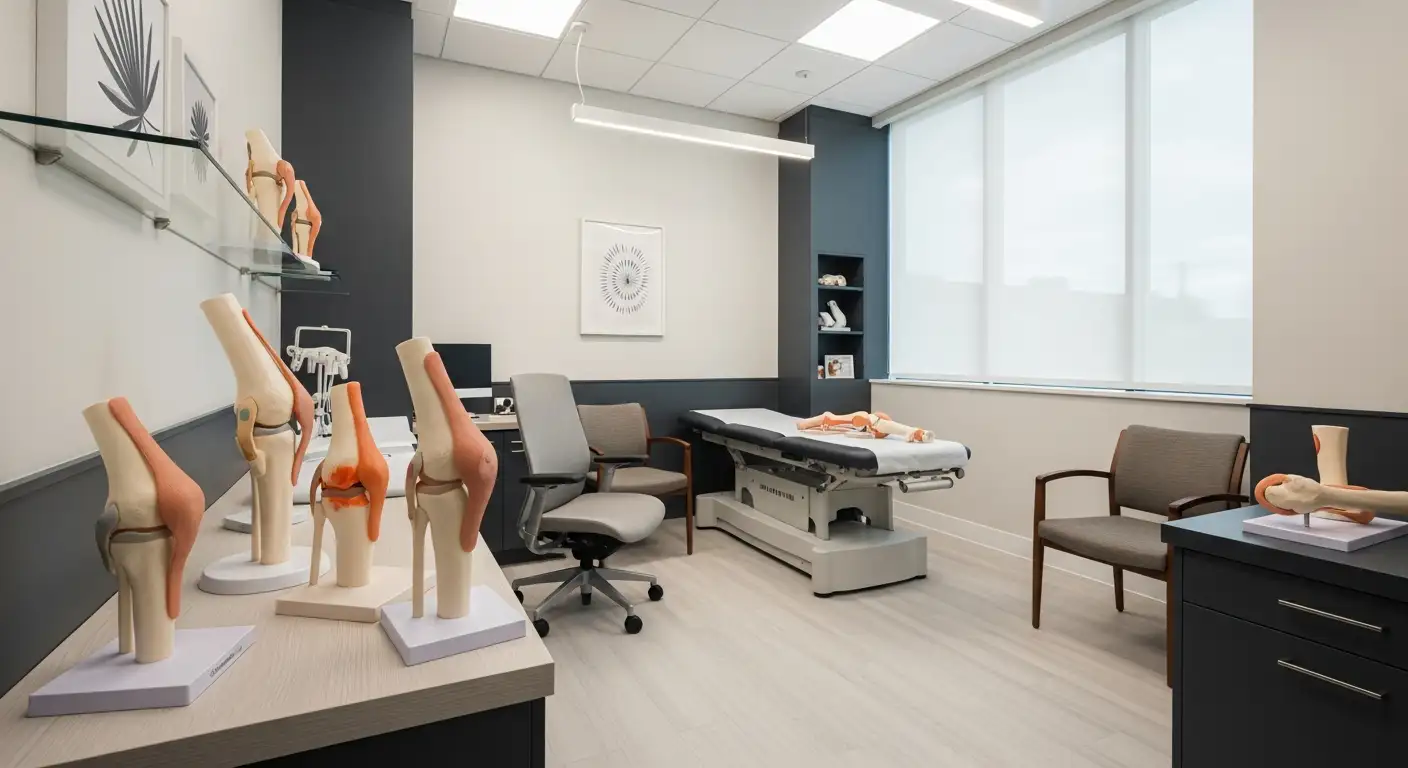Understanding Knee Pain in Arthritis Flare-Ups
Knee pain from arthritis flare-ups is a debilitating condition that affects millions of adults, particularly those with osteoarthritis, the most common form of arthritis. These flare-ups bring about increased pain, stiffness, swelling, and reduced mobility, often triggered by overexertion, weather changes, stress, or dietary factors. Managing these episodes effectively requires a comprehensive approach that encompasses lifestyle adjustments, medical treatments, physical therapy, and sometimes surgical interventions. This article explores the available methods to treat knee pain caused by arthritis flare-ups, helping patients regain mobility and improve their quality of life.
Medical Treatments for Knee Pain in Arthritis Flare-Ups
What are the common medical treatments for knee pain?
Knee pain during arthritis flare-ups can be managed through various medical treatments. Self-care strategies include rest, applying ice or heat, and elevating the joint to reduce swelling and discomfort. Physical therapy plays a significant role in strengthening muscles around the knee and improving flexibility, which helps stabilize the joint and lessen pain.
How are medications like NSAIDs and acetaminophen used?
Medications are central to controlling knee pain and inflammation. Non-steroidal anti-inflammatory drugs (NSAIDs), such as ibuprofen and naproxen, are commonly used to reduce swelling and ease pain. These can be taken orally or applied topically via creams and gels to minimize systemic side effects. Acetaminophen (paracetamol) may also be used particularly for mild pain, but it is generally less effective than NSAIDs for arthritis-related symptoms and should be used cautiously to avoid liver damage.
What is the role of corticosteroid and hyaluronic acid injections?
When oral or topical medications are insufficient, injections may be considered. Intra-articular corticosteroid injections provide short-term relief by reducing inflammation in the knee joint, although repeat injections should be limited due to potential side effects. Hyaluronic acid injections act as lubricants to improve joint movement and may offer longer-lasting pain relief, especially for chronic knee osteoarthritis, though evidence is mixed.
Are there emerging treatment options for knee pain?
New treatments such as platelet-rich plasma (PRP) and stem cell injections are under investigation to promote tissue healing and reduce pain. However, these therapies currently lack standardized protocols and sufficient evidence, so they are not routinely recommended by clinical guidelines.
What supportive therapies help manage knee arthritis symptoms?
Supportive therapies complement medical treatments and improve functionality. Topical agents like capsaicin cream can block pain signals and provide additional relief, though initial burning sensations may occur. Assistive devices such as knee braces, shoe inserts, and walking aids help reduce joint stress and improve stability during flare-ups. Heat and cold packs are also effective in symptom management, with heat boosting blood flow and cold reducing inflammation.
| Treatment Type | Examples | Description and Benefits |
|---|---|---|
| Medications | NSAIDs, acetaminophen | Reduce inflammation and pain; NSAIDs more effective but with higher risks |
| Injections | Corticosteroids, hyaluronic acid | Targeted relief, corticosteroids for short-term; hyaluronic acid for potential long-term benefit |
| Supportive Therapies | Capsaicin cream, braces, heat/cold packs | Pain relief, joint stability, symptom management |
| Emerging Options | Platelet-rich plasma, stem cells | Experimental with insufficient evidence for routine use |
The Role of Physical Therapy in Managing Knee Arthritis Symptoms

How does physical therapy help in relieving knee pain and improving function?
Physical therapy plays a vital role in managing knee arthritis by focusing on several core areas that help reduce pain and enhance joint function. Strengthening exercises target muscles around the knee—especially the quadriceps, hips, and core—to provide increased joint stability and support, which lessens stress on the arthritic joint.
Flexibility training is essential to maintain or improve the knee’s range of motion, decreasing stiffness and preventing abnormal movements that could further damage the joint or surrounding areas. Therapists often use manual therapy techniques and modalities such as heat, cold, ultrasound, and electrical stimulation to reduce inflammation and alleviate discomfort during flare-ups.
Personalized home exercise programs and activity modifications are designed to support long-term joint health by minimizing joint overload while encouraging safe movement practices. Importantly, regular physical therapy helps prevent disease progression by strengthening supportive tissues, improving joint mechanics, and encouraging healthy weight management.
Overall, physical therapy helps patients with knee arthritis maintain functionality, reduce pain, and sustain independence in daily activities through a comprehensive, individualized approach.
Managing Osteoarthritis Symptoms During Knee Flare-Ups
Symptom Patterns and Flare Triggers
Osteoarthritis (OA) flare-ups in the knee involve increased pain, stiffness, swelling, and difficulty with movement. These flare episodes can last from days to weeks and are commonly triggered by overexertion, joint injuries, repetitive activities, stress, weight gain, cold weather, and sudden changes in barometric pressure.
Self-Care Strategies Like Rest, Ice, and Heat
During flare-ups, resting the affected knee joint helps minimize pain and prevents further damage. Applying cold packs can reduce inflammation and numb pain, while heat therapy promotes blood flow and relaxes stiff muscles around the joint. Gentle movement or physical therapy exercises, rather than complete inactivity, help maintain joint flexibility.
Medication Use During Flare-Ups Including OTC Options
Over-the-counter pain relievers such as acetaminophen or NSAIDs (e.g., ibuprofen, naproxen) provide effective control of pain and inflammation during flare-ups. Topical NSAID creams and capsaicin cream may also help reduce knee pain with fewer systemic side effects. In more severe or persistent cases, corticosteroid injections administered by a healthcare provider offer short-term relief.
Lifestyle and Dietary Modifications
Maintaining a healthy weight significantly reduces mechanical pressure on knee joints, decreasing flare severity and frequency. A diet rich in anti-inflammatory foods—such as fatty fish, berries, leafy greens, nuts, and olive oil—supports joint health. Stress management and adequate sleep are important to reduce flare triggers and improve overall well-being.
Supportive Devices and Alternative Therapies
Using supportive aids like knee braces, insoles, or walking sticks can stabilize the joint and redistribute load to reduce pain. Complementary therapies such as acupuncture and manual therapy might provide additional symptom relief, although their effectiveness varies and they are not universally recommended. Physical therapy remains a cornerstone for strengthening muscles around the knee to enhance stability and function.
A multidisciplinary approach combining these strategies allows personalized and effective management of knee osteoarthritis flare-ups, improving mobility and life quality.
Corticosteroid Injections: Advantages and Limitations

What role do corticosteroid injections play in treating knee osteoarthritis?
Corticosteroid injections are used to provide short-term relief from pain, inflammation, and stiffness in knee osteoarthritis. Administered directly into the joint, they often lead to meaningful symptom improvement lasting up to 12 weeks. These injections help reduce inflammation and alleviate discomfort, making them valuable when other treatments have not provided sufficient relief.
Duration and effectiveness for pain relief
The pain relief from corticosteroid injections typically lasts from a few weeks up to a few months. They are particularly useful for managing acute flare-ups or times when symptoms worsen. However, their effectiveness tends to decrease with repeated use, and they are not considered a long-term solution.
Potential side effects and risks
While corticosteroid injections reduce inflammation, potential side effects include joint tissue damage, cartilage deterioration, increased blood sugar levels, and other systemic effects. Repeated injections might accelerate osteoarthritis progression and cause localized harm to the joint.
Guidelines on frequency of injections
Medical guidelines recommend limiting corticosteroid injections to no more than three or four times per year to minimize risks. Monitoring patient response and side effects is crucial to avoid overuse and joint damage.
Alternatives and complementary treatments
Other options include hyaluronic acid injections, which act as joint lubricants and can provide longer-lasting relief but with variable evidence of effectiveness. Emerging treatments like platelet-rich plasma (PRP) injections are still under investigation and not routinely recommended due to insufficient evidence. Complementary therapies such as capsaicin cream or physical therapy may support symptom management alongside injections.
In summary, corticosteroid injections are an effective short-term treatment for knee osteoarthritis pain and inflammation but come with limitations regarding duration and risks. Careful use following clinical guidelines and considering alternatives can optimize patient outcomes.
Hyaluronic Acid Injections: Enhancing Joint Lubrication

Mechanism of Action and Administration
Hyaluronic acid injections work by supplementing the natural lubricating fluid found within the knee joint. This gel-like substance helps cushion the joint, reduce friction during movement, and potentially improve overall joint function. The treatment involves injecting hyaluronic acid directly into the affected knee, typically administered as a series of 3 to 5 weekly injections.
Effectiveness in Pain Reduction and Mobility
Many patients report reduced knee pain and better mobility following hyaluronic acid therapy. The injections aim to relieve symptoms when other treatments, like pain medications or physical therapy, fail to provide sufficient improvement. However, the effectiveness of these injections is somewhat mixed, with some studies showing only modest benefits compared to placebo.
Duration of Symptom Relief
The symptom relief from hyaluronic acid injections is generally temporary, lasting around six months. This offers a valuable window of improvement for patients who require ongoing management of osteoarthritis symptoms without immediate resort to surgery.
Comparison with Other Injection Therapies
Compared to corticosteroid injections, which provide faster but shorter relief (usually less than eight weeks), hyaluronic acid injections may offer longer-lasting benefits but with a slower onset. Unlike emerging treatments like platelet-rich plasma or stem cell injections, hyaluronic acid therapy has more established safety data, though its clinical effectiveness is less definitive.
Patient Selection and Safety Considerations
Hyaluronic acid injections are usually considered for patients with moderate knee osteoarthritis who do not respond adequately to conservative treatments. They are generally safe with minimal side effects, such as transient joint swelling or discomfort at the injection site. However, their use is not routinely recommended in all guidelines due to the variability in outcomes.
| Aspect | Details | Notes |
|---|---|---|
| Mechanism | Supplements natural joint lubricant, improves cushioning | Administered intra-articularly |
| Effectiveness | Modest pain relief, improved mobility for some patients | Variable results in clinical studies |
| Duration | Around six months of symptom relief | Longer than corticosteroid injections |
| Comparison | Slower onset than steroids, safer compared to some experimental therapies | Less evidence than established medications |
| Patient Selection | Moderate knee osteoarthritis, inadequate response to other treatments | Generally safe with minor side effects |
Surgical Interventions for Advanced Knee Osteoarthritis

What surgical options are available for severe knee osteoarthritis?
Severe knee osteoarthritis often necessitates surgical intervention when other treatments fail to provide relief. The main surgical procedures include:
Total Knee Arthroplasty (Total Knee Replacement): This involves replacing the entire knee joint with artificial components. It is widely performed to alleviate pain and restore joint function.
Unicompartmental Knee Replacement (Partial Knee Replacement): This surgery replaces only the damaged compartment of the knee, preserving healthier areas. It suits patients with localized joint damage.
Knee Osteotomy: Primarily for younger, active patients, this procedure realigns the knee bone to shift weight away from damaged cartilage, potentially delaying joint replacement.
Knee Arthroscopy: Sometimes used to assess joint damage or clean out debris, though its effectiveness in osteoarthritis is limited.
Indications for surgery
Surgery is generally considered for individuals who:
- Experience chronic, severe knee pain affecting daily activities
- Have significant joint deterioration confirmed by imaging
- Do not find adequate relief from medications, physical therapy, or other conservative treatments
- Have good overall health enabling them to undergo surgery safely
Expected outcomes and benefits
Surgical interventions can:
- Significantly reduce or eliminate knee pain
- Restore joint stability and improve range of motion
- Enhance the ability to perform everyday activities
- Improve overall quality of life
Patient criteria and decision factors
Selecting the appropriate surgery depends on multiple factors:
- Age and activity level of the patient
- Extent and precise location of joint damage
- Patient’s medical history and comorbidities
- Desired recovery time and postoperative expectations
Postoperative considerations and rehabilitation
Post-surgery management includes:
- Structured physical therapy to regain strength and mobility
- Pain management and monitoring for surgical complications
- Gradual return to activities under medical supervision
- Long-term lifestyle modifications to prolong joint health
Surgical options for advanced knee osteoarthritis provide meaningful symptom relief and functional improvement, enabling many patients to regain mobility and comfort when conservative measures no longer suffice.
Lifestyle Modifications and Preventive Measures to Reduce Flare-Ups

Importance of weight management
Maintaining a healthy weight is crucial for reducing the strain on joints affected by osteoarthritis. Each pound of weight loss can reduce pressure on the knees by about four pounds, significantly lowering pain and slowing joint damage. Increased physical activity combined with dietary changes supports sustainable weight loss and improves overall joint health.
Benefits of low-impact and cross-training exercises
Engaging in low-impact exercises such as swimming, walking, and cycling helps strengthen muscles around the joints without causing excessive wear. Cross-training with various activities improves muscle balance and joint stability, reducing the risk of flare-ups. Stretching key muscles like quadriceps, hamstrings, calves, and core before and after exercise maintains joint flexibility and prevents pain.
Dietary recommendations to reduce inflammation
A nutritious diet rich in anti-inflammatory foods benefits joint health and flare-up prevention. Incorporating fatty fish, berries, leafy greens, nuts, and olive oil can help lower inflammation. Supplements like fish oil, turmeric, glucosamine, and chondroitin may also support joint function. Avoiding excessive intake of red meat, processed foods, saturated fats, and salt further reduces flare-up triggers.
Stress management techniques
Stress can trigger arthritis flare-ups, so managing it through mindfulness, meditation, and balanced sleep schedules is essential. These techniques reduce mental fogginess and fatigue often associated with flares and help maintain overall wellbeing.
Use of supportive footwear and protective gear
Proper footwear that provides adequate support and cushioning protects joints during daily activities. Insoles, compression sleeves, braces, and walking aids can redistribute pressure and enhance joint stability. Avoiding high-impact surfaces also helps preserve joint health and minimize flare-up risk.
Comprehensive Management for Lasting Relief
Treating knee pain caused by arthritis flare-ups demands a multifaceted approach tailored to individual needs. Combining medical treatments like medications and injections with physical therapy can effectively reduce pain and restore function. When symptoms persist, surgical options provide long-term solutions. Equally important are lifestyle changes such as weight management, exercise, and stress reduction, which help prevent flare-ups and slow disease progression. Through early intervention, personalized care, and ongoing support, individuals suffering from knee arthritis can regain mobility, minimize discomfort, and enhance their overall quality of life.
References
- Treatment and support Osteoarthritis
- Coping With an Arthritis Flare
- Osteoarthritis: Symptoms, Causes & Treatment Options
- Causes of Arthritis Flare-Ups and Relief Tips
- Learn About Pain Meds for Osteoarthritis
- Triggers and Treatments for Arthritis Flare-Ups
- Ways to Find Relief from Knee Arthritis
- Osteoarthritis: Diagnosis and Treatment
- Knee pain - Diagnosis and treatment
- Knee Pain: What It Is, Causes, Treatment & Relief





